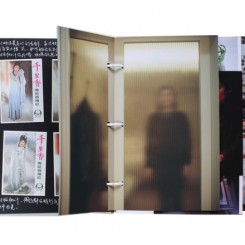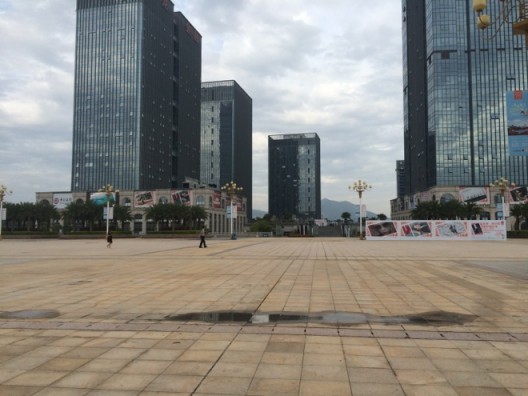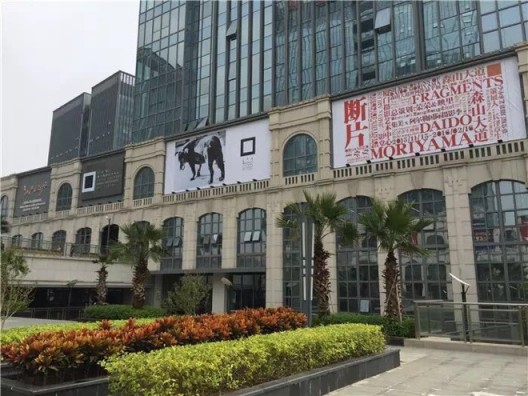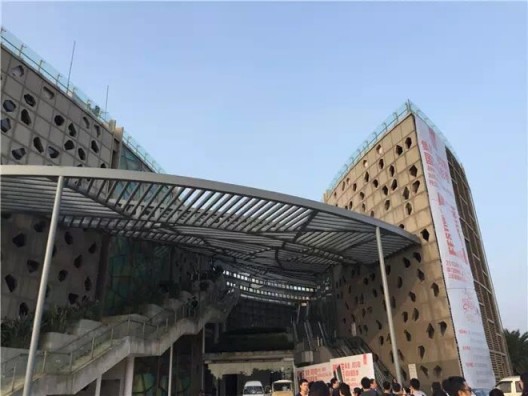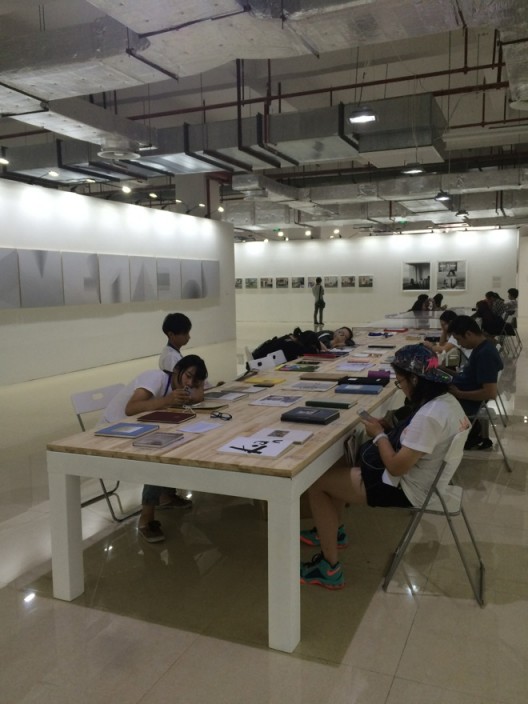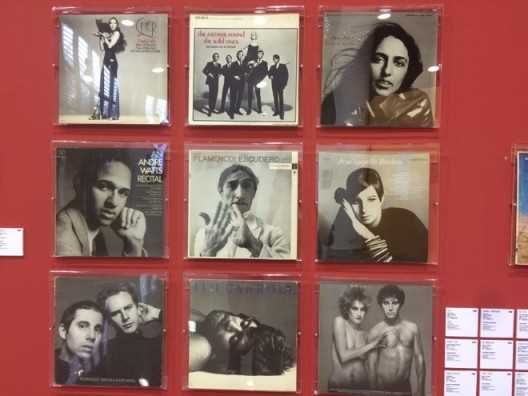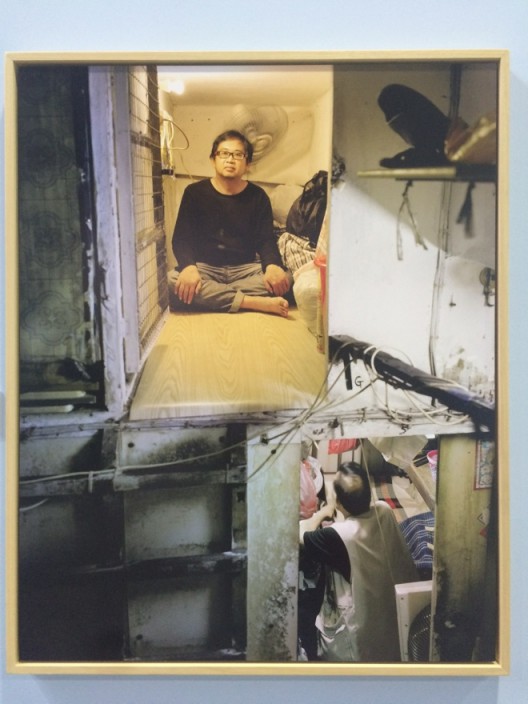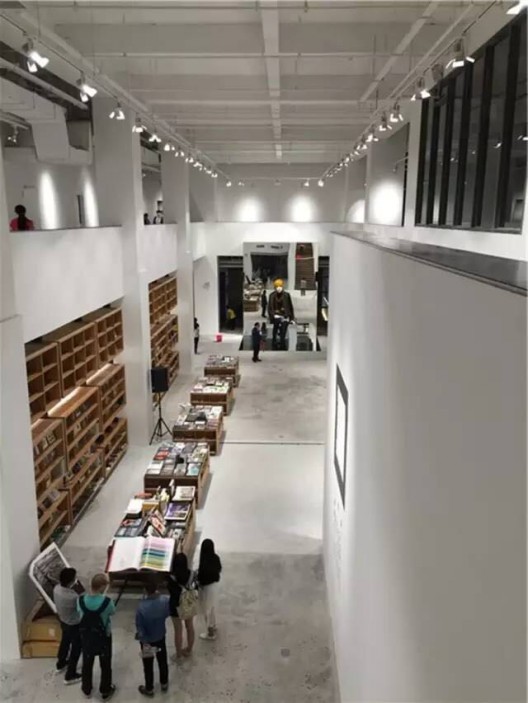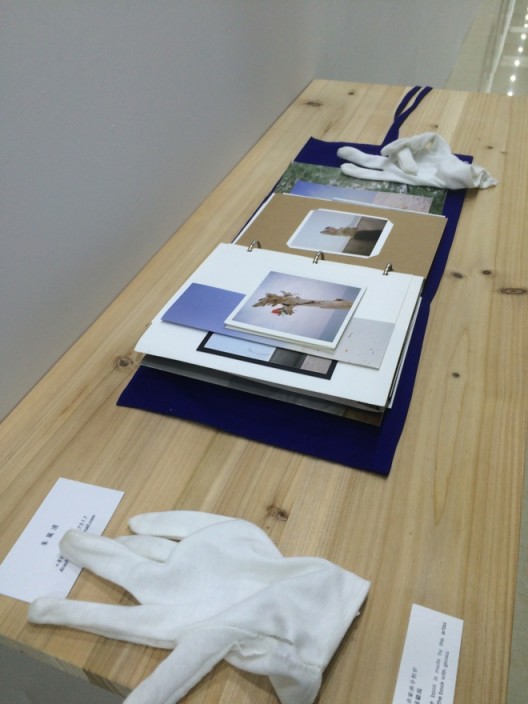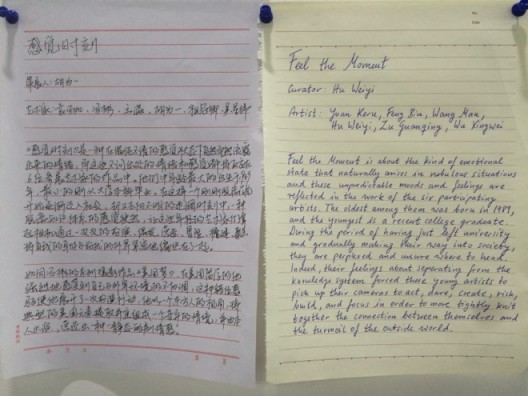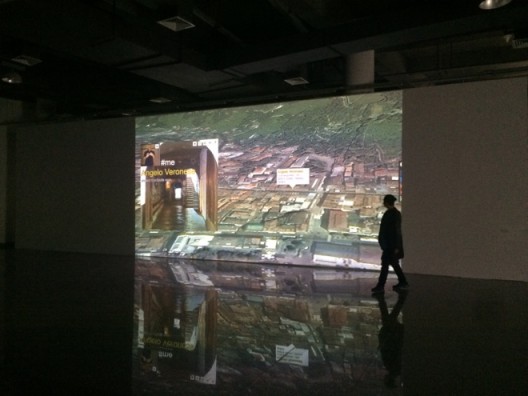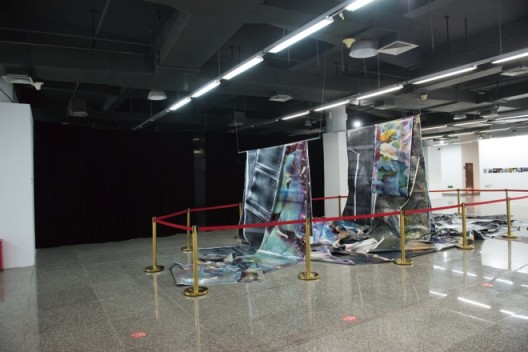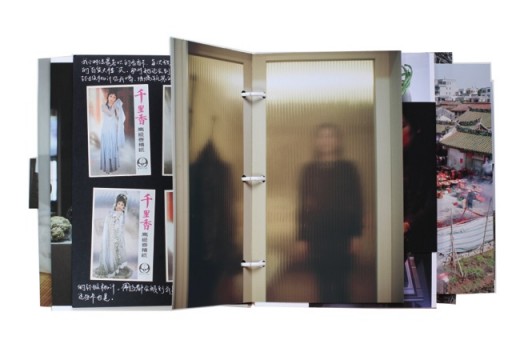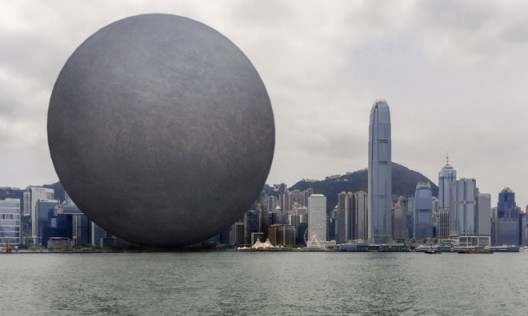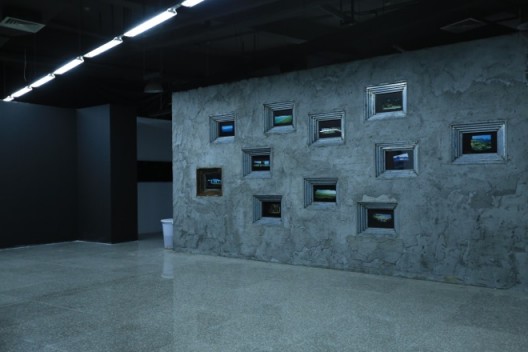“Jimei x Arles Photography Festival”
Nov 15 – Dec 16, 2015
Launched late last year in Xiamen—the result of collaboration between the renowned French photography festival, “Les Recontres d’Arles De La Photographie”, and Beijing’s Three Shadows Photography Art Centre—the first “Jimei x Arles Photography Festival” is no doubt an exciting development in the world of Chinese photography. That said, we are watching it like a print in a tray of developer, still waiting for a clear image to materialize.
With Li Zhenhua, an independent curator, serving as the festival’s managing director, “Jimei X Arles Photography Festival” invited a mob of artists, curators, academics, gallery owners, and collectors to curate thirty sections at the festival. Three hundred and eighty-eight artists brought nearly two thousand pieces to the exhibition, challenging the traditional role of curators in art exhibitions. At the same time, the festival also featured five brilliant exhibition units from “Les Rencontres d’Arles” of 2015.
Rong Rong, photographer and co- founder of Three Shadows Photography Art Centre, has been bringing “Les Recontres d’Arles” to the Mainland since 2010. From 2010 to 2013, Three Shadows hosted three consecutive “Arles in Beijing” photography festivals. As a native of Fujian, Rong Rong’s motivation for bringing Arles to Xiamen and establishing a photography art center in a new city where arts and culture are still in their infancy goes beyond a desire to return to his roots; it is a continuation of the well-worn path of using culture as a means of urban revitalization. Jimei District hopes to leverage the photography festival to promote not only the arts but also the development of the local economy and tourism industry—just one in a recent spate of cultural events held in Jimei, including the Strawberry Music Festival and Xiamen International Fashion Week.
In fact, “Les Recontres d’Arles” may have played a similar role in the development of Arles—a small town in the south of France—with the difference being the original festival’s longer history. Founded in 1970, “Les Recontres d’Arles” takes advantage of nearly every usable space in Arles, including historical buildings like twelfth-century chapels, the Espace Van Gogh, the Arles amphitheater, and abandoned industrial buildings, and is now a major event in the photographic calendar.
“Arles x Jimei” is comprised of three exhibition areas: the Xiamen Yuanbo Garden Expo Center, the Xiamen Jiageng Art Center, and the Southern Headquarters of the Three Shadows Photography Art Center, which includes the Three Shadows Xiamen Photography Art Center and +3 Gallery. Some satellite exhibitions were also held on the main island of Xiamen, including the “Lu Yanjin x Lu Yanpeng Photography Exhibition” held at Live Art Space by Hai Jie, of the WeChat public account—Art289—and “00:04:19”, a solo exhibition by the UK-based artist Zhu Tian held at AKP Space.
The Xiamen Yuanbo Garden Expo Center covers an area of nearly seven square kilometers—basically it takes two hours to walk from one end to another. I visited the Festival after the opening, and had the chance to take in many themed areas of the park, including the Chinese Education Park, the Enterprise Park, and the Landscape Architect’s Park. Besides the greenery and man-made lake, the Xiamen Yuanbo Garden Expo Center bore little thematic relationship to a “garden” or “park” of any kind (though “theme park” comes to mind): that awkward amalgamation of the sort of banal public sculpture so commonplace in China, and a series of miniature, stylized landscapes (the Chinese Education Park, for instance, features miniature versions of the gates of Tsing-Hua and Peking University). Visitors were sparse that weekend afternoon. Walking from “park” to “park” within the Expo Center was always a considerable trek, whether I wanted to go from the main gates of the Expo Center to its entrance, or from one “garden” to another. The journey from the North gates of the Expo Center to Jiageng Art Center was yet another odyssey which took me across a massive overpass and an enormous plaza, the immensity of which seemed to dwarf human dimensions. Everything—from the ceremonial columns [huabiao] to the flowerbeds, from the bridge piles to terrace steps—was a direct challenge to my capacity as a pedestrian. There was something ideological about the scale of the plaza, bordered on all sides by classic examples of new socialist construction and towering metal structures. As we traversed the vast space, the festival staff member who accompanied me mentioned that many of the newly-built government buildings were vacant due to the recent upswing in anti-corruption measures, a fact which cast a sickly pall of irony on all the grandiose columns and expanses of concrete (read: waste) I was witnessing.
In thematic terms, the exhibition set out to examine the overlap and boundary between photography and so-called “manufactured images.” Jointly curated by an independent curator and scholar of photography, He Yining, and the curator for Three Shadows Photography Art Center, Shen Chen, “Representation of the Land” was rooted in landscape photography, which is relatively more specific, and also explored what landscape photography reveals about the relationship between people and the land. The works exhibited were sourced from three of the forty landscape photographers that He Yining is currently researching. In addition, the pair also curated an independent photo book exhibition entitled, “New Photo and Beyond—Chinese Contemporary Photo Book Exhibition 1996–2015”. On some level, the “Jimei x Arles Photography Festival” broke away from the photography scene in China; unlike the many other photography festivals and biennials that have been held on the Mainland over the past several years, it did not work too closely with the “professional photography” community. Instead, “Jimei x Arles” was more closely related to the “contemporary art scene”, thereby resulting in a lack of connection to the history of photography and its language or themes in the present context. At the festival, viewers were more likely to see photography as a creative practice, or even as a form of image completely totally unrelated to photography as a medium. Undeniably, many contemporary artists do view photography as yet another medium for creating images, in the same way that all other visual art activities result in image generation. However, the specific image production system unique to photography, as well as the subjectivity of the medium, were absent from the festival because of the elected curatorial perspective. For a photography festival, this seemed as something of a shortcoming.
The managing director, Li Zhenhua, chose not to create any connections between the narratives and topics of each exhibition when developing the overall scheme of the exhibition. Though this was undoubtedly a strategy which effectively tapped into the participants’ potential for preparing unique exhibitions, it also lead to visitors having inconsistent impressions of the festival. Of course, there must have been other considerations at the implementation level, such as the allocation of exhibition spaces and the connections between each exhibition area. These considerations become more difficult to manage as the selection of works on show diversifies. Just in terms of display, most photographs at the exhibition were hung on walls, with publications and videos sporadically interspersed throughout.
Sam Stourdzé, the director of “Les Rencontres d’Arles” festival since 2010, selected five exhibition units: “Fellini, 8 ½ Colour”, Gabriele Galimberti & Paolo Woods”, “Total Records—The Great Adventure of Album Cover Photography”, “The Nominators of the 2015 Discovery Award, and an exhibition of the winning books from “The 2015 Book Awards”. The exhibition area allocated for “Les Rencontres d’Arles” was located on the first floor of the exhibition hall near the south gate of the Yuanbo Garden Expo Center; the exhibition is logically arranged, with a distinct hierarchy and a vibrant layout.
The most probing solo exhibition located in the Rencontres d’Arles exhibition section was “The Heavens, Annual Report”—a collaboration between the photographers Paolo Woods and Gabriele Galimberti. With a cohesive narrative, the exhibition detailed the duo’s scrutiny of tax evasion in locales across the world—tax havens through which more than half of global commerce flows through today and which produce an endless sordid stream of news. Over the last two years, the pair have been absorbed in the process of matching this invisible topic with corresponding images, visiting overseas financial centers which offer services in tax avoidance, secrecy, offshore finances—and with wealth untold. Then, through a series of photographic works, they showed us what these places look like, and more importantly—their significance. Their work places a fundamental ethical issue before us, an issue which encompasses the relationship between public and private, corporations and states, haves and have-nots.
“Total Records—The Great Adventure of Album Cover Photography” and a publication of the same name is a collection of over three hundred classic album covers. The exhibition demonstrated the countless and incredible ways in which huge names in photography, including Nobuyoshi Araki, Roger Ballen, Annie Leibovitz, and William Eggleston, have engaged with music. Artists, graphic designers, and photographers have all used the vinyl envelope as a canvas, including the banana Andy Warhol painted for “The Velvet Underground and Nico”, and the prism on the cover of Pink Floyd’s “Dark Side of the Moon”. The exhibition also included a section comparing and contrasting differing album covers issued in different countries and regions as a result of different systems and restrictions. For example, a nude slipcover was placed over a John Lennon and Yoko Ono album cover, which obscured the pair’s exposed genitals. In the exhibition introduction, the curator Jacques Denis writes, “Some photographers built a style; others built icons. Labels built visual identities where photography mattered more than anything else.”
Whether in terms of depth of exploration of creative themes, the overall visual presentation, or the effectiveness of the exhibition experience, the works and exhibitions found in the “Les Rencontres d’Arles” exhibition area were of significantly higher quality than in any of the other sections. Exhibition units across the festival were scattered: some areas seemed as if they had been set up in a hurried, chaotic manner. A lack of grasp over the space was noticeable in many set-ups, and in many instances, wall space was clumsily employed. The Daido Moriyama solo exhibition “Fragments”, curated by Three Shadows Photography Art Center, presented a series of silkscreen prints and the artist’s Mesh Tights series, alongside a set of derivatives including sofas and coffee tables, as one might find in a high-end furniture mall. However, Li Zhenhua was full of confidence when speaking of his hopes for a second and third festival; he plans to gradually grow the list of festival curators to include over a hundred names or more. Though we are unsure of the criteria the local government of Jimei uses to evaluate this project, one might hope that they would consider the project’s professionalism and influence within the field, aside from quantifiable indicators such as the number of festival attendees (50,000) and the amount of media coverage. In terms of the entire ecology of China’s photography festivals and biennials, “Jimei x Arles” undoubtedly puts forth a new and effective approach. It has also helped Three Shadows Photography Art Center project themselves into Xiamen—the larger Xiamen space being an improvement on their Beijing space.
In the tradition of “Les Recontres d’Arles”, “Jimei x Arles” also set up their own “Discovery Awards”, comprised of one “Jimei x Arles Discovery Award” (RMB 200,000) and three “Jimei x Arles” Nomination Awards (RMB 50,000). The “Discovery Award” was given to Zhu Lanqing, and the three Nomination Awards were handed out to Daisuke Yokota, Shen Xiaomin, and Zhang Zengzeng. As a result of her win, Zhu Lanqing was invited to hold a solo exhibition in the 47th “Les Recontres d’Arles” in 2016, and has also released a photo book.
Considerable resources were invested in this photography festival. Ultimately, though, the works on show and the festival’s ability to inspire and support the creation of new photography while promoting local cultural awareness are the final indicators which will predict its longevity. In the period following the festival, research must be done on the festival’s locality, and in-depth work should be carried out on specific projects. In other words, Three Shadows’s new space in Xiamen and their annual photography festival should complement each other. If their close collaboration with “Les Recontres d’Arles” continues, considerable development in the future is a given. However, the jury is still out on whether the festival is positioned appropriately, and its contribution to the exploration and promotion of photography itself remains to be seen.

